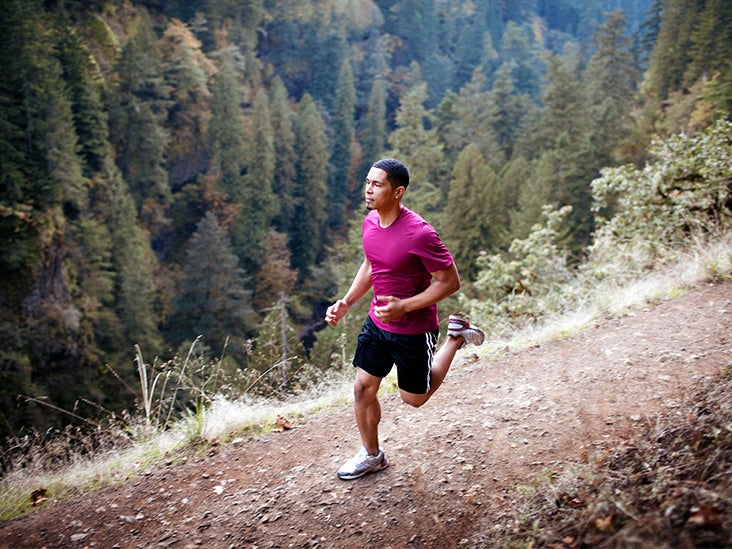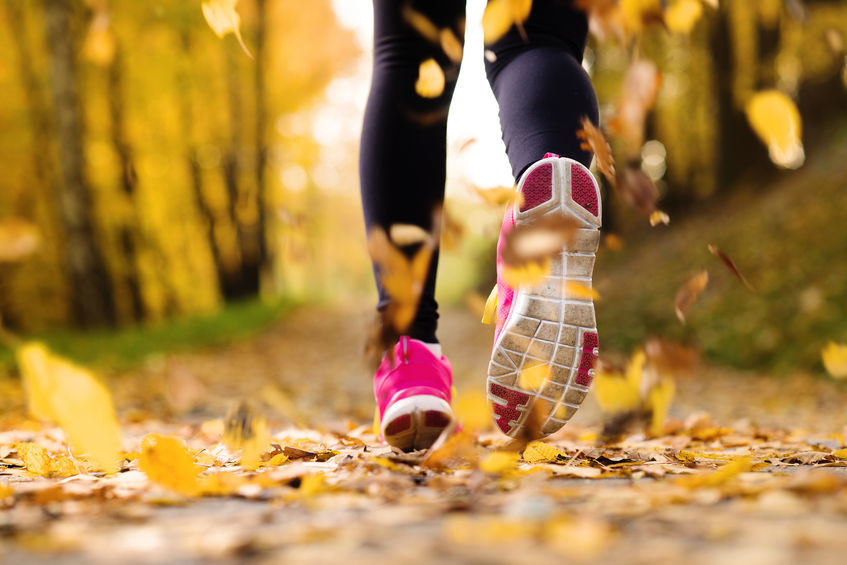
Outdoor workouts provide a refreshing and invigorating experience, allowing people to exercise while enjoying nature and fresh air. However, it’s important to be aware of the potential hazards that can arise in outdoor environments. From weather-related risks to traffic dangers, this article will explore various aspects of outdoor workout hazards and provide detailed strategies for staying safe and healthy. Whether you’re an avid runner, cyclist, or simply someone who enjoys exercising outdoors, understanding these hazards is crucial for a successful and injury-free outdoor workout routine.
Weather-related Hazards during Outdoor Workouts

One of the primary considerations when exercising outdoors is the weather. Extreme temperatures, inclement weather conditions, and natural disasters can pose significant risks to individuals engaging in outdoor activities. It’s essential to be prepared and take appropriate precautions to ensure personal safety.
1. High Temperatures and Heat-related Illnesses
Exercising in hot weather can lead to heat exhaustion and even heatstroke if proper precautions are not taken. The combination of physical exertion and high temperatures can strain the body’s ability to regulate temperature, leading to potentially life-threatening situations. To prevent heat-related illnesses:
- Hydrate adequately before, during, and after your workout.
- Dress in light, breathable clothing that allows sweat evaporation.
- Avoid exercising during peak heat hours, typically between 10 a.m. and 4 p.m.
- Seek shade or cool indoor areas whenever possible.
- Gradually acclimate to higher temperatures by starting with shorter workouts.
2. Cold Temperatures and Hypothermia
Exercising in cold weather presents its own set of challenges, with the risk of hypothermia being a significant concern. Hypothermia occurs when the body loses heat faster than it can produce, resulting in dangerously low body temperature. To stay safe during cold-weather workouts:
- Layer clothing appropriately to trap heat and insulate your body.
- Cover extremities such as hands, feet, and head to minimize heat loss.
- Be aware of wind chill and adjust your clothing accordingly.
- Warm up indoors before venturing outside to exercise.
- If you experience shivering, confusion, or drowsiness, seek shelter and warmth immediately.
3. Thunderstorms and Lightning
Thunderstorms pose a significant threat during outdoor workouts, especially in open spaces or elevated areas. Lightning strikes can cause severe injuries and even fatalities. To reduce the risk of being struck by lightning:
- Check weather forecasts before heading out and be alert for storm warnings.
- If thunderstorms are predicted, consider indoor alternatives or reschedule your workout.
- Seek shelter in substantial buildings or fully enclosed vehicles if you’re caught in a thunderstorm.
- Avoid seeking shelter under isolated trees, tall structures, or metal objects that can conduct electricity.
4. Outdoor Air Quality
Air quality can have a substantial impact on respiratory health, particularly for individuals with allergies or respiratory conditions. Poor air quality due to pollution, pollen, or other allergens can exacerbate symptoms and make outdoor workouts challenging. Here’s how to mitigate the risks:
- Monitor air quality indexes provided by local authorities or online resources.
- Adjust your workout intensity or duration on days when air quality is poor.
- Consider exercising in areas with lower pollution levels, such as parks or green spaces.
- Wear a mask designed to filter out particles if necessary.
Importance of Proper Hydration during Outdoor Workouts

Proper hydration is vital for maintaining optimal physical performance and preventing dehydration-related complications during outdoor workouts. Sweating, increased respiration rate, and exposure to different weather elements all contribute to fluid loss. Follow these guidelines to stay well hydrated:
- Drink Water Before, During, and After Exercise
Hydrating adequately should start well before your workout begins. Aim to drink at least 16 ounces (500 milliliters) of water two hours before exercising. During your workout, continue to drink water every 15-20 minutes, especially in hot weather or during prolonged activities. After finishing your workout, replenish lost fluids by drinking more water.
- Consider Electrolyte Replacement for Intense Workouts
For workouts lasting longer than one hour or involving high intensity, electrolyte replacement becomes crucial. Electrolytes are minerals like sodium, potassium, and magnesium that help maintain fluid balance and aid muscle function. Consuming sports drinks or electrolyte-rich beverages can be beneficial in these situations.
- Monitor Urine Color as a Hydration Indicator
An easy way to assess your hydration status is to monitor the color of your urine. Pale yellow or clear urine indicates proper hydration, while dark yellow or amber-colored urine suggests dehydration. Aim for light-colored urine as an indicator of adequate fluid intake.
- Be Mindful of Hydration Challenges in Different Weather Conditions
Hot and humid weather increases sweat rates, making it essential to increase fluid intake accordingly. In contrast, cold weather may reduce thirst sensation, leading to inadequate hydration. Always pay attention to weatherconditions and adjust your hydration strategy accordingly.
Preventing Injuries while Exercising Outdoors

Outdoor workouts come with their own set of injury risks, ranging from muscle strains to falls. By following proper techniques and taking necessary precautions, you can significantly reduce the likelihood of getting injured during your outdoor exercise sessions. Here are some tips to keep in mind:
- Warm Up and Cool Down
Before diving into your workout, it’s crucial to warm up your muscles and prepare them for physical activity. Dynamic stretches and light cardio exercises can increase blood flow, improve flexibility, and reduce the risk of muscle strains. Similarly, cooling down with static stretches after your workout helps prevent muscle tightness and soreness.
- Use Proper Form and Technique
Maintaining correct form while performing exercises is essential for preventing injuries. Whether you’re running, cycling, or doing strength training exercises, focus on proper alignment, engage the appropriate muscles, and avoid excessive strain on joints. If you’re unsure about the correct technique, consider working with a certified personal trainer to learn the proper form.
- Gradually Increase Intensity and Duration
Avoid pushing yourself too hard or attempting to achieve significant progress too quickly. Gradually increase the intensity, duration, or difficulty of your workouts to allow your body to adapt and minimize the risk of overuse injuries. Listen to your body and take rest days when needed.
- Wear Appropriate Footwear
Choosing the right footwear for your specific activity is vital for preventing foot and ankle injuries. Different sports and activities require different levels of cushioning, support, and traction. Invest in a good pair of athletic shoes that fit properly and provide adequate stability and shock absorption for your chosen outdoor workout.
- Pay Attention to Terrain
Outdoor environments can present various types of terrain, such as trails, sidewalks, or uneven surfaces. Be mindful of your surroundings and adapt your movements accordingly. Watch out for obstacles, potholes, or slippery areas that could cause trips or falls. Varying your training surfaces can also help build strength and stability.
- Be Visible and Use Safety Equipment
If you exercise during low-light conditions or near traffic, prioritize your visibility to others. Wear brightly colored or reflective clothing, especially in the early morning or evening hours. Additionally, use safety equipment such as bike lights, reflectors, or helmets to enhance your visibility and protect yourself from potential accidents.
Safety Tips for Outdoor Running and Jogging
Running and jogging are popular outdoor activities due to their accessibility and cardiovascular benefits. However, it’s essential to follow specific safety guidelines to ensure a safe and enjoyable running experience. Consider the following tips:
- Plan Your Route and Inform Others
Before heading out for a run, plan your route ahead of time. Familiarize yourself with the area, especially if you’re exploring new trails or neighborhoods. Let someone know your planned route and estimated duration, especially if you’re running alone. This way, someone can check on you if needed.
- Stay Aware of Your Surroundings
Maintain situational awareness while running outdoors. Stay alert to your surroundings, including other runners, cyclists, pedestrians, or vehicles sharing the same path. Avoid distractions like loud music or talking on the phone, as they can hinder your ability to react to potential hazards.
- Run Facing Traffic
When running on roads without designated sidewalks or paths, always run against the direction of traffic. This allows you to see approaching vehicles and react accordingly. If possible, choose routes with separate pedestrian or running lanes to minimize interaction with vehicles.
- Use Crosswalks and Follow Traffic Rules
Obey traffic rules and use designated crosswalks when crossing streets. Wait for the appropriate signal before proceeding, even if there are no vehicles in sight. Be cautious when running near intersections or driveways, as drivers may not anticipate your presence.
- Consider Running with a Buddy
Running with a friend or joining a local running group can enhance both safety and enjoyment. Having a running buddy provides an extra layer of security, especially in secluded or unfamiliar areas. It also allows for mutual motivation and support during your workouts.
- Be Mindful of Extreme Weather Conditions
Adjust your running routine according to weather conditions. On extremely hot days, opt for early morning or late evening runs when temperatures are lower. In cold or icy conditions, choose well-maintained paths and wear appropriate gear to prevent slips and falls. Monitor weather forecasts and be prepared to modify or reschedule your run if necessary.
Avoiding Heat Exhaustion and Heatstroke during Outdoor Workouts
Exercising in hot and humid environments increases the risk of heat-related illnesses, including heat exhaustion and heatstroke. These conditions can be life-threatening, but by taking preventative measures, you can safeguard your health while working out in hot weather:
- Know the Signs and Symptoms
Heat exhaustion and heatstroke exhibit different symptoms, and it’s crucial to recognize them promptly. Heat exhaustion symptoms include heavy sweating, dizziness,nausea, headache, and pale, moist skin. Heatstroke, on the other hand, is more severe and may present with a lack of sweating, high body temperature, rapid heartbeat, confusion, and even loss of consciousness. If you or someone else experiences these symptoms, seek immediate medical attention.
- Hydrate Properly
Proper hydration is essential to prevent heat-related illnesses. Drink plenty of water before, during, and after your workout. As mentioned earlier, aim for at least 16 ounces (500 milliliters) of water two hours prior to exercising and continue to hydrate at regular intervals during your workout. Avoid sugary or caffeinated beverages as they can contribute to dehydration.
- Dress Appropriately
Wear loose-fitting, lightweight, and breathable clothing when working out in hot weather. Opt for moisture-wicking fabrics that help evaporate sweat, keeping you cooler. Use sunscreen with a high SPF to protect your skin from harmful UV rays but choose sweat-resistant formulas to avoid them running into your eyes.
- Time Your Workouts Wisely
Plan your workouts during the cooler parts of the day, such as early morning or late evening. Avoid exercising during the peak heat hours, typically between 10 a.m. and 4 p.m., when temperatures are highest. If possible, find shaded areas or explore routes with ample tree cover to shield yourself from direct sunlight.
- Take Breaks and Seek Shade
Listen to your body and take frequent breaks during your outdoor workout sessions, especially in hot weather. Find shaded areas or rest in air-conditioned spaces to allow your body to cool down. Use this time to rehydrate and assess how you’re feeling before continuing with your workout.
- Modify Intensity and Duration
Adjust the intensity and duration of your workout to accommodate the heat. Reduce the pace, shorten your workout session, or choose less strenuous activities during hot weather conditions. It’s important to be mindful of your body’s response and not push beyond your limits in extreme heat.
Common Risks of Outdoor Strength Training Exercises

Strength training exercises provide numerous benefits, including improved muscle strength, bone density, and metabolism. However, when performed outdoors, certain hazards and risks need to be addressed. Here are some common risks associated with outdoor strength training exercises and strategies to mitigate them:
- Uneven Surfaces and Obstacles
Outdoor environments may have uneven surfaces, such as grassy areas or rocky terrain. These irregularities can increase the risk of slips, trips, and falls while performing strength training exercises. Before starting your workout, clear the area of any debris or obstacles that could pose a hazard. Choose a stable and flat surface whenever possible.
- Insufficient Support and Equipment Stability
Outdoor locations may lack the sturdy equipment found in gyms, increasing the risk of instability during strength training exercises. When using park benches, tree branches, or other outdoor structures for support, ensure they are strong and secure enough to handle the load. Check for loose screws, rotting wood, or other signs of structural weakness before incorporating them into your workout routine.
- Overexertion and Improper Technique
Improper technique and excessive weight can increase the risk of strains, sprains, and other musculoskeletal injuries. Ensure you’re using proper form and technique for each exercise. If you’re new to strength training or unfamiliar with specific movements, consider working with a qualified personal trainer who can guide you through proper execution.
- Extreme Temperatures and Hydration
As mentioned earlier, extreme temperatures can impact outdoor workouts, including strength training exercises. In hot weather, take extra precautions to stay hydrated and avoid overheating. Pay attention to signs of heat exhaustion or heatstroke and modify your workouts accordingly. In cold weather, dress in layers to maintain warmth and consider shorter workout durations to prevent overexposure.
- Use of Resistance Bands and Equipment
Resistance bands and other portable exercise equipment are popular choices for outdoor strength training workouts. Ensure you’re using these tools correctly, following the manufacturer’s instructions. Inspect resistance bands for any signs of wear or tear before each use to prevent them from snapping or causing injury.
- Adequate Warm-up and Cool-down
Proper warm-up and cool-down routines are crucial before and after strength training exercises. Warm-up exercises increase blood flow, loosen up muscles, and prepare the body for the upcoming activity. Cooling down with stretches helps prevent muscle tightness and aids in recovery. Neglecting these essential components can increase the risk of injuries during your outdoor strength training sessions.
Protecting Yourself from Sunburn during Outdoor Workouts

Exercising outdoors exposes your skin to harmful ultraviolet (UV) rays, increasing the risk of sunburn, premature aging, and skin cancer. Protecting yourself from sunburn is essential for maintaining healthy skin while enjoying outdoor workouts. Here are some tips to shield yourself from the sun:
- Apply Sunscreen Properly and Reapply RegularlyWhen exercising outdoors, apply a broad-spectrum sunscreen with a sun protection factor (SPF) of 30 or higher to all exposed skin. Pay attention to commonly overlooked areas like the ears, back of the neck, and tops of the feet. Remember to reapply sunscreen every two hours or more frequently if you’re sweating heavily.
- Seek Shade and Use Protective Clothing
Whenever possible, exercise in shaded areas or create your shade using umbrellas or canopies. Wearing protective clothing such as hats with wide brims, sunglasses with UV protection, and lightweight, long-sleeved shirts and pants can provide an additional barrier against harmful UV rays.
- Time Your Workouts Wisely
Plan your workouts during times when the sun’s intensity is lower, typically in the early morning or late afternoon. This reduces your exposure to direct sunlight and decreases the risk of sunburn. Be aware that UV rays can still be harmful on cloudy or overcast days, so take precautions regardless of the weather.
- Protect Your Eyes
UV rays also pose a risk to your eyes. Wear sunglasses with UV protection to shield your eyes from both UVA and UVB rays. Look for sunglasses labeled as providing 100% UV protection or UV400 protection.
- Stay Hydrated
Proper hydration is crucial for overall health, including maintaining healthy skin. Drink plenty of water before, during, and after your outdoor workouts to keep your skin hydrated and support its natural defense mechanisms.
- Consider Sun-Protective Accessories
In addition to sunscreen and clothing, there are accessories designed specifically for sun protection. Consider using items like arm sleeves, neck gaiters, or breathable face masks with UPF (Ultraviolet Protection Factor) ratings to enhance sun protection while allowing for airflow.
Remember, protecting your skin from sunburn is important not only during outdoor workouts but also in everyday life. Practicing good sun protection habits can help maintain the health and appearance of your skin in the long term.
















